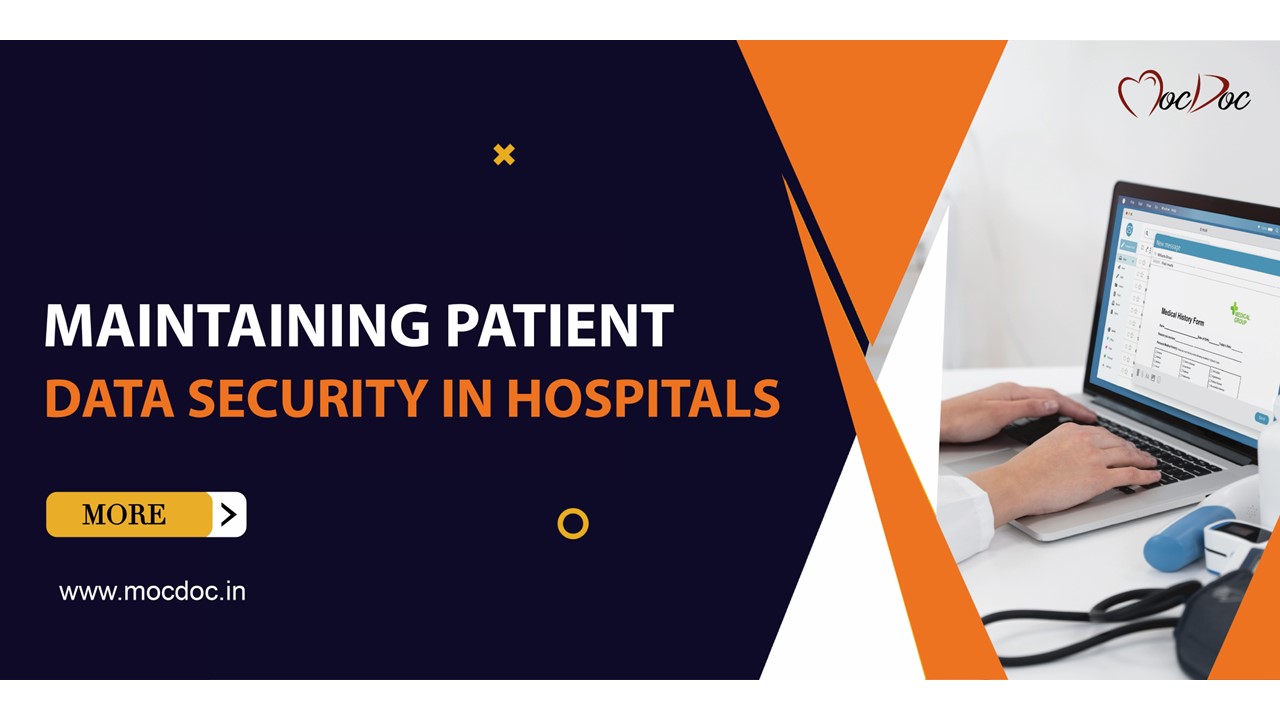Maintaining Patient Data Security at Hospitals - PowerPoint PPT Presentation
Title:
Maintaining Patient Data Security at Hospitals
Description:
Learn the importance of implementing access control measures in Hospital Information Systems to protect patient data. Read about the types of access controls and best practices for maintaining patient data security in hospitals. – PowerPoint PPT presentation
Number of Views:4
Title: Maintaining Patient Data Security at Hospitals
1
(No Transcript)
2
The Importance of Access Control in Hospital
Information Systems Healthcare has embraced
technology in the digital age, and one solution
that has transformed the healthcare sector is
Hospital Information System. This digital
platform has revolutionized how healthcare
providers manage and store patient data,
simplifying their operations and enhancing
patient outcomes. However, HIS also poses
significant security risks that cannot be
ignored. Therefore, implementing access control
measures is crucial in protecting the
confidentiality and security of patient data.
3
Use of sensitive information in Hospital
Information Systems The Hospital Management
System is a digital platform that manages
different aspects of hospital operations,
including sensitive patient data such as medical
history, diagnosis, treatment plans, and
medications. Unfortunately, cybercriminals target
such data, either for personal gain or to cause
disruptions in healthcare operations. Thus,
implementing access control measures in the
hospital management system is critical to
ensuring the confidentiality and security of
patient data.
4
Why access control is Essential in Hospital
Management Software The hospital software is a
valuable source of sensitive patient data that
includes medical history, treatment plans,
diagnosis, and medication. However, HIS is a
primary target for cybercriminals who aim to
steal the data for financial gain or to disrupt
healthcare operations. Moreover, patient data is
subject to regulatory compliance, such as HIPAA
which mandates that healthcare providers must
implement administrative, physical, and technical
safeguards to prevent unauthorized access to
patient data. Safeguarding patient data and
protecting the HIS implies the need for access
control over patient data. It involves managing
and restricting access to authorized users
exclusively. With access control measures in
place, healthcare providers can minimize the
possibility of data breaches, uphold patient
confidentiality, and meet regulatory obligations.
5
Types of Access Controls Access Control in HIS
can be categorized into three types - Physical,
Administrative, and Technical. Physical Access
Control - This involves the use of physical
methods to restrict access, including locks,
keys, and security cameras to control entry into
server rooms, or other areas where HIS is stored.
In addition, biometric devices such as
fingerprint scanners can be used to provide
secure access to HIS and ensure that only
authorized personnel can access the system.
6
Administrative Access Control - This refers to
the policies and procedures in place to manage
access restriction. It includes background checks
for employees who will have access to sensitive
patient data, the development of password
policies, and access control policies that govern
who can access what data and under what
circumstances. It also includes employee training
programs, to ensure that all personnel are aware
of their responsibilities for protecting patient
data. Technical Access Control - This involves
the use of technology to restrict access to HIS.
Deploying firewalls to protect against
unauthorized access to the network, intrusion
detection systems to identify potential threats,
encryption to protect data in transit and at
rest, and multi-factor authentication to ensure
that only authorized personnel can access HIS are
a few ways of doing this. Technical access
control measures require continual monitoring and
updating to ensure that they are effective in
detecting and preventing security breaches.
7
To ensure the security and confidentiality of
patient data, healthcare providers should follow
certain best practices for access control in HIS.
Some of them are as follows
8
Implementing Role-Based Access Control - To
ensure that only authorized users can access
patient data, healthcare providers should
implement role-based access control. This access
control strategy involves granting access to
Hospital Information System (HIS) based on the
users job responsibilities and role in the
healthcare organization. This approach reduces
the risk of unauthorized access to sensitive
patient data, as users can only access the
information necessary to perform their job
duties. Regular Review of Access Logs - This is
important to identify any unauthorized access
attempts or unusual activity. This process helps
to detect potential security breaches and
mitigate risks associated with data breaches. By
conducting a regular review of access logs,
healthcare providers can quickly identify and
respond to security incidents, ensuring that
patient data remains confidential and secure.
Enforcing Password Policies - To ensure the
security of patient data, healthcare providers
should enforce password policies that require
users to create strong, complex passwords and
change them on a regular basis. Additionally,
passwords should include muti-factor
authentication to provide an extra layer of
security.
9
Provide Regular Training - Regular training for
employees is essential to ensure that healthcare
providers maintain high standards of data
security and confidentiality. Employees must be
informed about the latest security threats and
trained on best practices for securing patient
data. This minimizes the risk of data breaches,
protects patient privacy, and ensures compliance
with regulatory requirements. Updating
Security Measures - To maintain the security of
patient data, healthcare providers should
frequently update their security measures to
ensure that they are up to date with the latest
threats and vulnerabilities. To conclude, access
control is crucial to ensure the security and
confidentiality of patient data in hospitals. By
following the best practices, we can ensure that
patient data is protected, regulatory
requirements are met, and patient confidentiality
is maintained. As technology continues to evolve
and the healthcare industry becomes more reliant
on digital solutions, access control will
continue to play a vital role in securing
hospital information systems and patient data.































